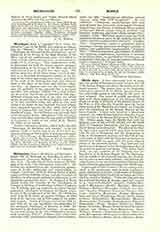

Middle Ages. A term commonly used to designate that period of European history between the Fall of the Roman Empire and about the middle of the fifteenth century. The precise dates of the beginning, culmination, and end of the Middle Ages are more or less arbitrarily assumed according to the point of view adopted. The period is usually considered to open with those migrations of the German Tribes which led to the destruction of the Roman Empire in the West in 375, when the Huns fell upon the Gothic tribes north of the Black Sea and forced the Visigoths over the boundaries of the Roman Empire on the lower Danube. A later date, however, is sometimes assumed, viz., when Odoacer deposed Romulus Augustulus, the last of the Roman Emperors of the West, in 476. Others, again, begin the Middle Ages with the opening years of the seventh century and the death (609) of Venantius Fortunatus, the last representative of classic Latin literature. The close of the Middle Ages is also variously fixed; some make it coincide with the rise of Humanism and the Renaissance in Italy, in the fourteenth century; with the Fall of Constantinople, in 1453; with the discovery of America by Columbus in 1492; or, again, with the great religious schism of the sixteenth century. Any hard and fast line drawn to designate either the beginning or close of the period in question is arbitrary. The widest limits given, viz., the irruption of the Visigoths over the boundaries of the Roman Empire, for the beginning, and the middle of the sixteenth century, for the close, may be taken as inclusively sufficient, and embrace, beyond dispute, every movement or phase of history that can be claimed as properly belonging to the Middle Ages.
A great part of THE CATHOLIC ENCYCLOPEDIA is devoted to the movements, ecclesiastical, intellectual, social, political, and artistic, which made up European history during this period so fertile in human activities, whether sacred or profane. Under the titles covering the political divisions of Europe, past and present (e.g., Alsace-Lorraine; Vicariate Apostolic Anhalt; Austro-Hungarian Monarchy; Grand Duchy of Baden; Kingdom of Bavaria; Belgium; Bohemia; Bremen; Bulgaria; Castile and Aragon; Croatia; Denmark; England; France; Germany; Greece; Hamburg; Hesse; Hungary; Ireland; Italy; Karinthia; Krain; Diocese of Leon; Lippe; Lubeck; Luxemburg; Mecklenburg; Principality and Diocese of Monaco; Montenegro; Navarre; The Netherlands; Norway; Oldenburg; Papal States; Portugal; Reuss; Rome; Rumania; Russia; Saxe-Altenburg; Saxe-Coburg and Gotha; Saxe-Meiningen; Saxe-Weimar-Eisenach; Saxony; Schaumburg-Lippe; Schwarzburg-Rudolstadt; Schwarzburg-Sondershausen; Scotland; Servia; Sicily; Spain; Sweden; Switzerland; Venice; Principality of Waldeck; Wales; Kingdom of Wurtemberg) are given in detail their respective political and religious developments throughout the Middle Ages. Under articles of a wider scope (e.g., Europe; Christendom; Pope) is found a. more general and synthetic treatment. Particular aspects and movements peculiar to different portions of it are found in such articles as Chivalry; Crusades; Ecclesiastical Art; Feudalism; Gothic Architecture; Inquisition; The Conflict of Investitures; Land Tenure in the Christian Era; Monasticism; Ecclesiastical Music; Religious Painting; Pilgrimages; Sculpture; in the articles upon the great religious orders, congregations, and institutions which then came into existence; in the biographies of the popes, rulers, historical personages, scholars, philosophers, poets, and scientists whose lives fall within this period; in the accounts of the universities, cities, and dioceses which were founded and developed throughout Europe from the fall of the Roman Empire to the time of the Reformation, and in innumerable minor articles throughout the work.

